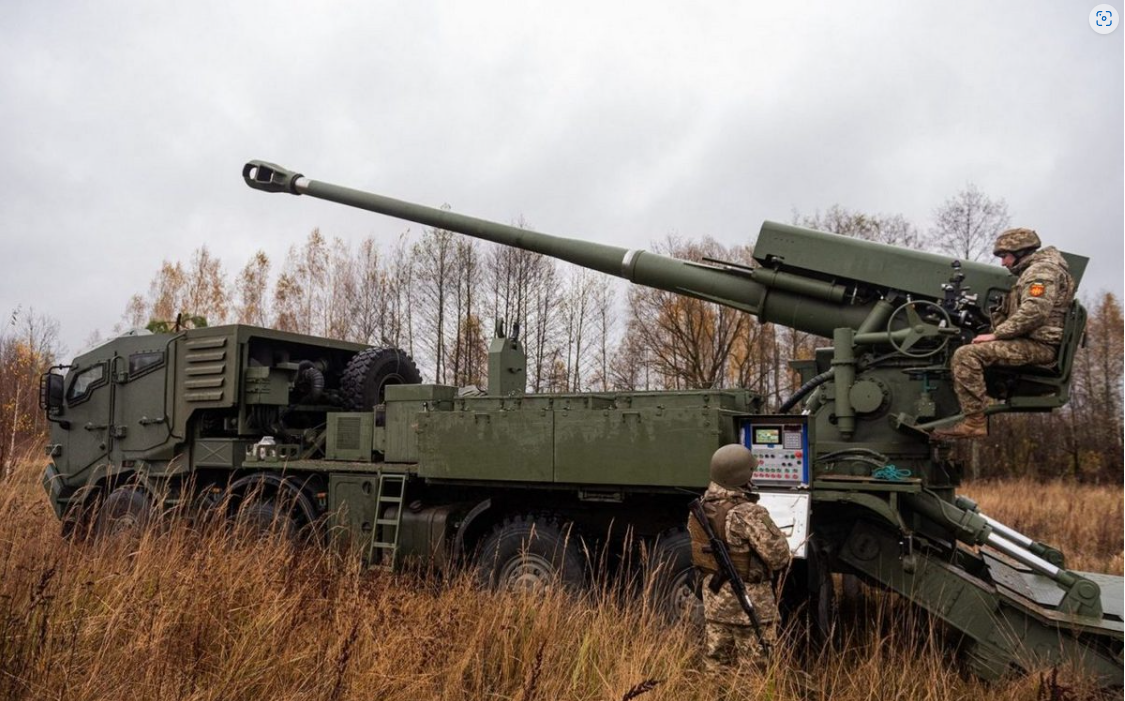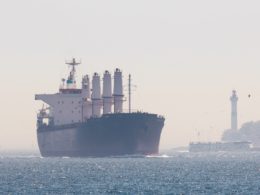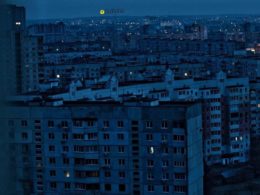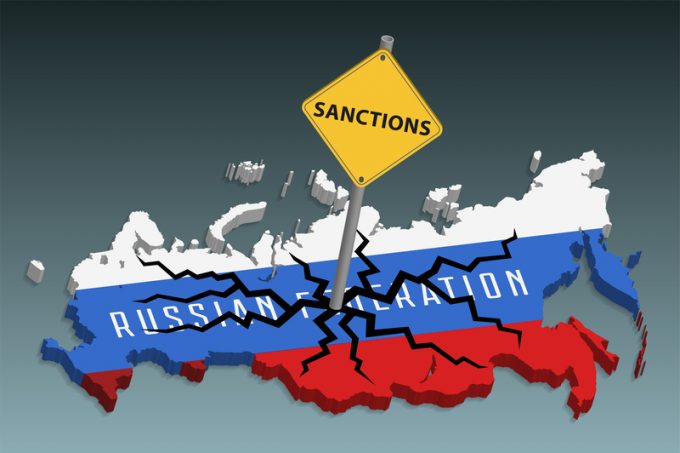Ukraine joins the exclusive club of nations producing self-propelled howitzers by rapidly developing the 155mm Bohdana. Pieced together using old Soviet trucks and Western shells, the highly effective Bohdana strikes as far as the French Caesar but at half the price.
Ukraine took the Bohdana from a single prototype to mass production in under two years, overcoming bureaucratic obstacles, legal battles, and Russian missile strikes against its facilities in 2022. Engineers swiftly relocated production plants and completed the self-propelled howitzer.
The Bohdana has been one of Ukraine’s most secretive military projects, with little public information beyond a few photos. Currently, 30 Bohdana units are actively deployed on the front lines. Notably, none have been destroyed in almost two years of war. Production expands as a trailer-mounted Bohdana version is under development.
Journalist Bohdan Miroshnychenko from Ekonomichna Pravda investigated this remarkable story, and we summarized his findings.
Strategic independence: Ukraine's need for its own howitzers
Soviet artillery relies on 152mm shells, while NATO uses 155mm. As Ukraine depends on Western ammunition, it needs 155mm howitzers. Developing domestic battery is a costly and risky endeavor, but it comes with advantages:
- Cost savings: Domestic howitzers require less spending, with taxes partially returning to the government;
- Efficient maintenance: The army can quickly repair equipment, buy spare parts, and provide feedback for improvements;
- Swift procurement: Unlike waiting for foreign arms, domestic production ensures timely access, avoiding delays and potential licensing issues.
Just in time: Ukraine's Bohdana Howitzer passes trial under fire
Developing self-propelled artillery is challenging, with each component and the entire system facing significant stress during firing. The barrel requires high-quality steel alloys and precise processing, while the chassis must handle 28 tons of load and the force of firing, and the armor protects against mines and fragments.
The Kramatorsk Heavy Machine Building Plant handled barrel development in Ukraine, and the Kremenchuk Automobile Plant provided the armored truck. Although the development cost is undisclosed, most expenses were covered by the Ministry of Defense.
The seven-year journey of developing Bohdana began in 2015, and in 2018, the howitzer was first shown at the Independence Day parade. However, a year later, development was put on pause. The Ministry of Defense and the developer argued over who should import the 155 mm shells needed for testing, which Ukraine had yet to produce domestically. The original plan was for Bohdana to enter serial production in 2020. However, preliminary firing tests were only completed in January 2022, a month before Russia's full-scale invasion.
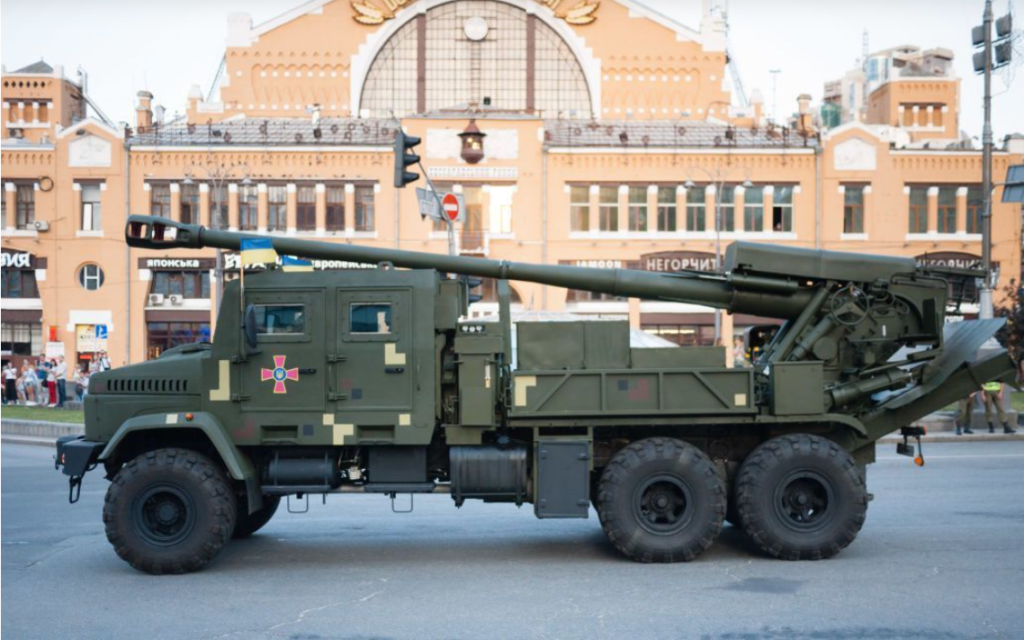
At that point, Bohdana's story could have ended. In the early days of the invasion, the Ukrainian General Staff ordered the destruction of the sole prototype in Kramatorsk since it was very close to the front lines and at risk of capture.
However, engineers evacuated Bohdana's components to the rear, where they were reassembled and given to the Ivan Bohun First Separate Special Purpose Brigade. Thus, the final adjustments and trials occurred in battlefield conditions.
Ultimately, Bohdana was put into Ukrainian army service via an expedited procedure.
"When development began, Soviet GOST standards and procedures from 1964 were still in effect, requiring years of research and reams of paperwork. Putin ‘helped’ simplify and accelerate all processes," noted one of the developers.
Bohdana in action: a formidable force on the field
Bohdana gained prominence during the Battle for Zmiinyi (Snake) Island in the Black Sea in July 2022, where it worked alongside the French howitzer Caesar. This victory opened maritime trade routes for Ukraine and forced Russia to negotiate a grain deal.

Impressed by Bohdana's battlefield performance, the Ukrainian Ministry of Defense ordered these self-propelled howitzers despite its initial reluctance to engage in long-term contracts with Ukrainian manufacturers, preferring swift army acquisitions. Timely orders allowed rapid production scaling, with several state contracts now in place, producing six Bohdana units monthly
— a pace comparable to the French Caesar production.
Bohdana's production involves 25 enterprises and 400 individuals. Certain processes are decentralized, with some components produced abroad to mitigate missile threats.
One of the most complex issues in the mass production of self-propelled howitzers was finding a suitable chassis. The Kremenchuk Automobile Plant, which provided the truck for the prototype, declared bankruptcy. While searching for alternatives, several trucks from the Belarusian Minsk Automobile Plant were found in storage. Bohdana contracted with the Ministry of Defense to supply the first batch of howitzers on these Minsk chassis as an interim solution to accelerate artillery deliveries for the army.
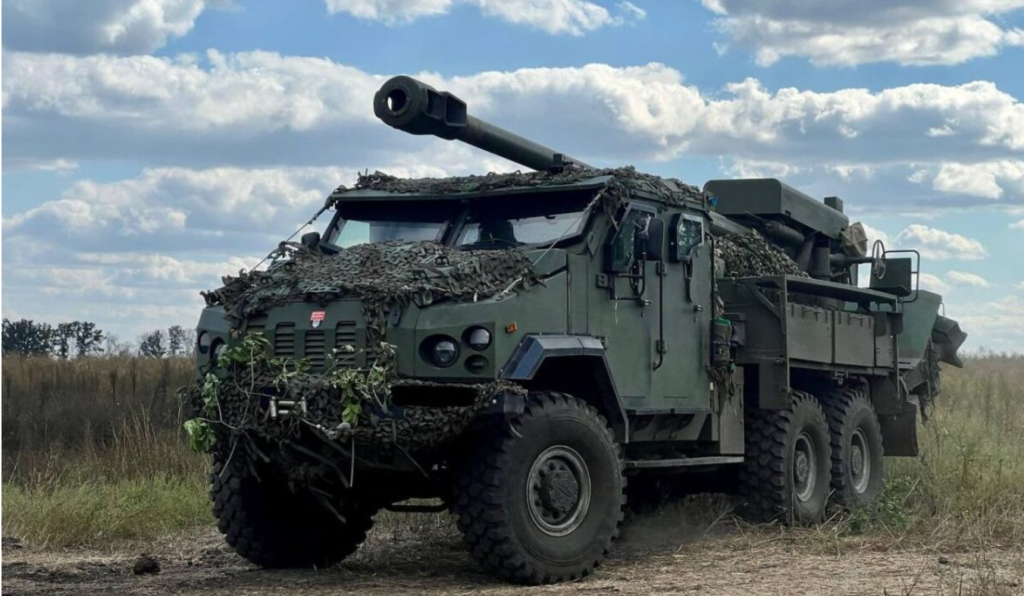
Later, Bohdanas appeared on the Czech Tatra T815-7 chassis with ready-made armored cabs from the manufacturer. The Ministry of Defense of Ukraine purchased these trucks long before the war and eventually found them in its warehouses. The military liked the Tatra, but these vehicles are twice as expensive as the Belarusian ones, and their production takes more than a year. A suitable chassis option has already been found but is not disclosed.
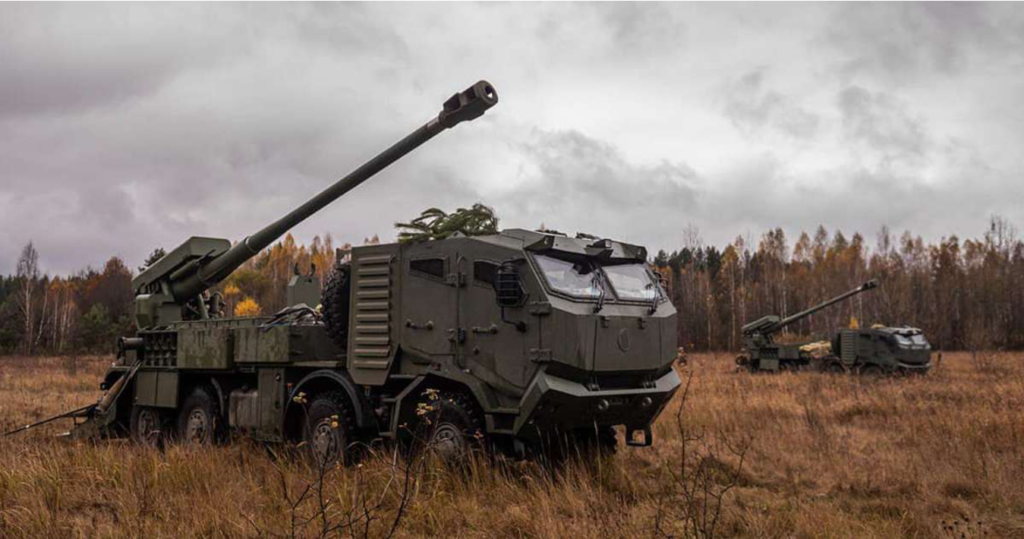
Another complex issue is an automatic loading system for the self-propelled howitzers, which increases the rate of fire and allows the use of MRSI tactics when the howitzer fires several shells at different angles so that they arrive at the target simultaneously.
"Bohdana does not have an autoloader. The shell weighs over 40 kilograms. This slows down the rate of fire and can lead to back problems for the gunners. There are many such cases along the entire front line," said Volodymyr Shchetinin, a developer of electronic systems for Ukrainian artillery.
The developers explain that the lack of complex automated systems makes the self-propelled howitzer more suitable for quick field repairs. However, the design documentation does provide for a full-fledged autoloader, so it will likely appear later.
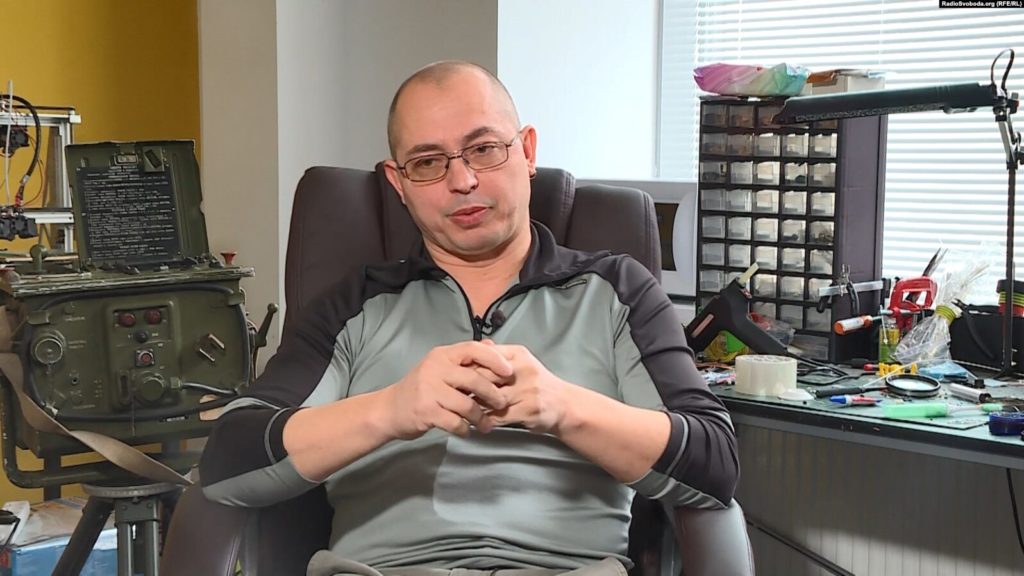
The Ukrainian military says that in other aspects, the howitzer has a decent level of automation, high maneuverability, and accuracy.
"If the first shell misses the target, the second one from the Bohdana will definitely hit it," said one military man with experience operating the system.
Bohdana can hit targets at a range of 42 km, equal to Caesar’s, and in its perfected version, it will boast a firing rate of up to seven rounds per minute.
Bohdana vs. Caesar: Ukraine's affordable artillery game-changer
Ukrainian self-propelled artillery, often compared to the French Caesar, holds a significant advantage in its price and accessibility. While Caesar costs approximately $5 million globally, Bohdana, claimed to be half as expensive by developers, becomes a crucial asset for the Ukrainian army facing losses in Western artillery on the front lines and reduced supplies from allies. Additionally, Bohdana eliminates the need to retrain Soviet-era artillery operators and is easily repairable.
"Comparing Bohdana to Caesar is like comparing a [old Soviet car] Zaporozhets to a [good German car] Mercedes. The difference is noticeable even in the details. Bohdana may not be an artillery dream, but in conditions of limited resources, it might be the only viable option for the Armed Forces of Ukraine," noted Shchetinin.
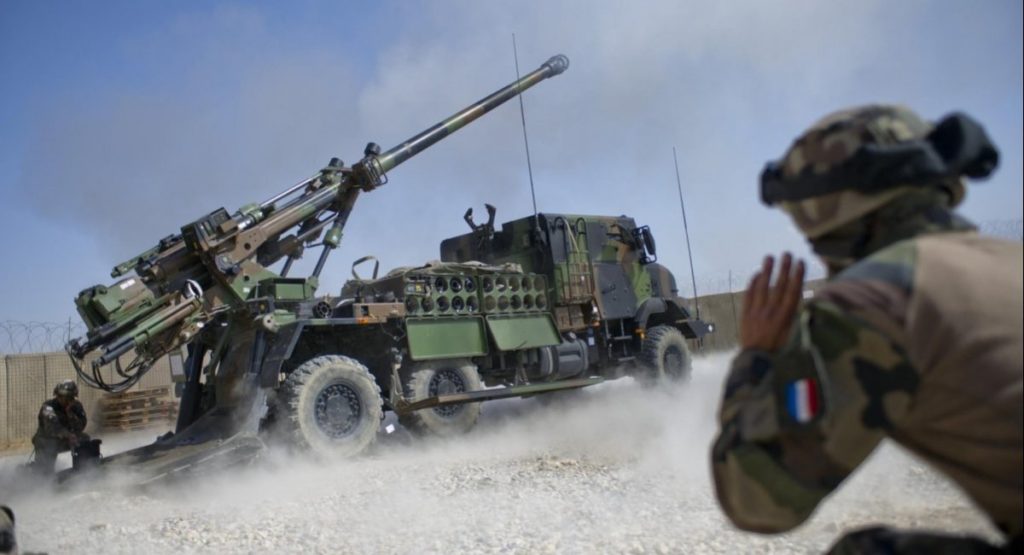
Developers are currently working on a towed version of Bohdana, offering a potent means of engagement, especially considering Ukraine's surplus barrel production compared to available chassis.
Ukraine's global artillery contender
Ukraine's Bohdana could emerge as the country's primary 155mm artillery system amid wartime use. With mass production underway and battlefield success, it holds global appeal potential. Indeed, NATO countries are unlikely buyers, as they invest in expensive technologies from established companies. Competition here is high, with major arms manufacturers ramping up production and showcasing developments against Russia.
However, countries in Africa, Asia, and Latin America may need help acquiring costly artillery, with Western manufacturers sometimes refusing sales. Perhaps the market for Bohdana lies in this niche—affordability and reliability.
Regardless, Ukrainian arms exports remain restricted amid the ongoing war, as everything produced goes to the front lines. This limitation grants Bohdana manufacturers time to refine its design for potential future exports.
Read more:
- Ukraine ramps up weapons production with US, Italian support
- Rheinmetall to commence armored vehicle production in Ukraine in 2024
- Ukroboronprom: Ukraine's "kamikaze" drones with 1,000 km combat radius in mass production

